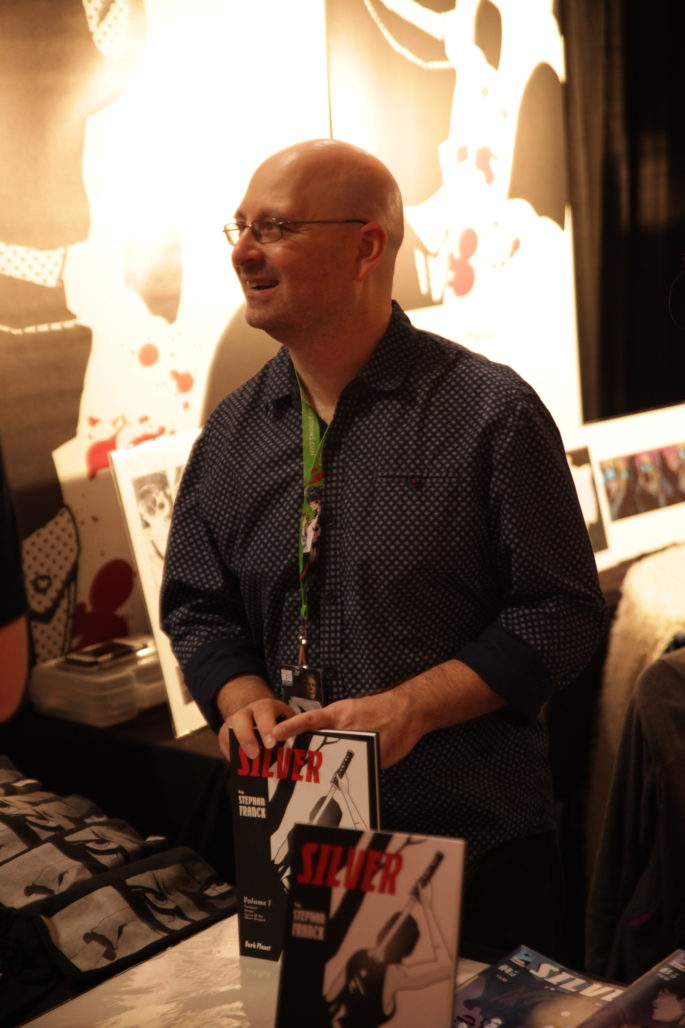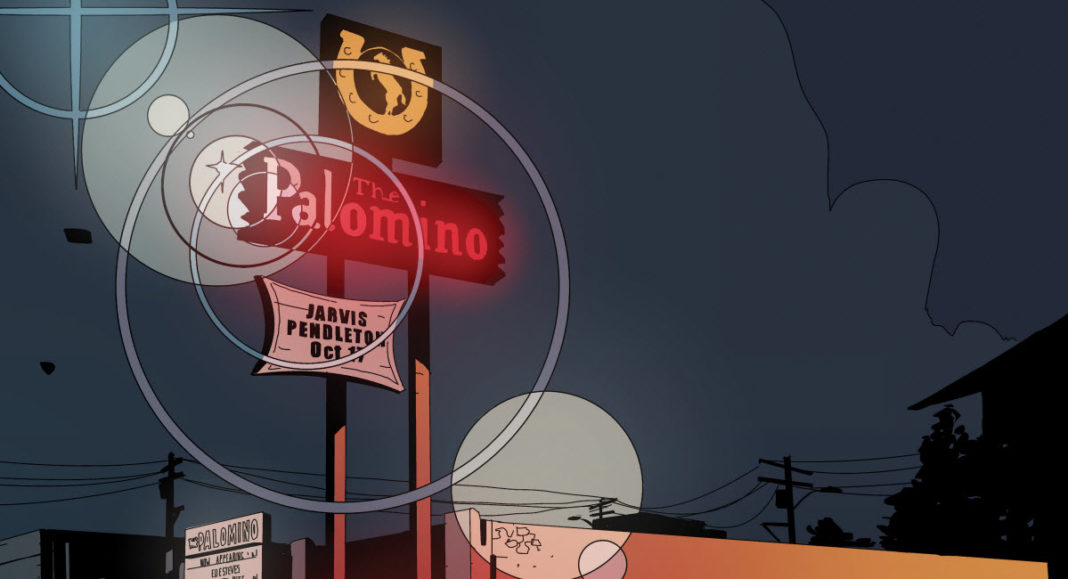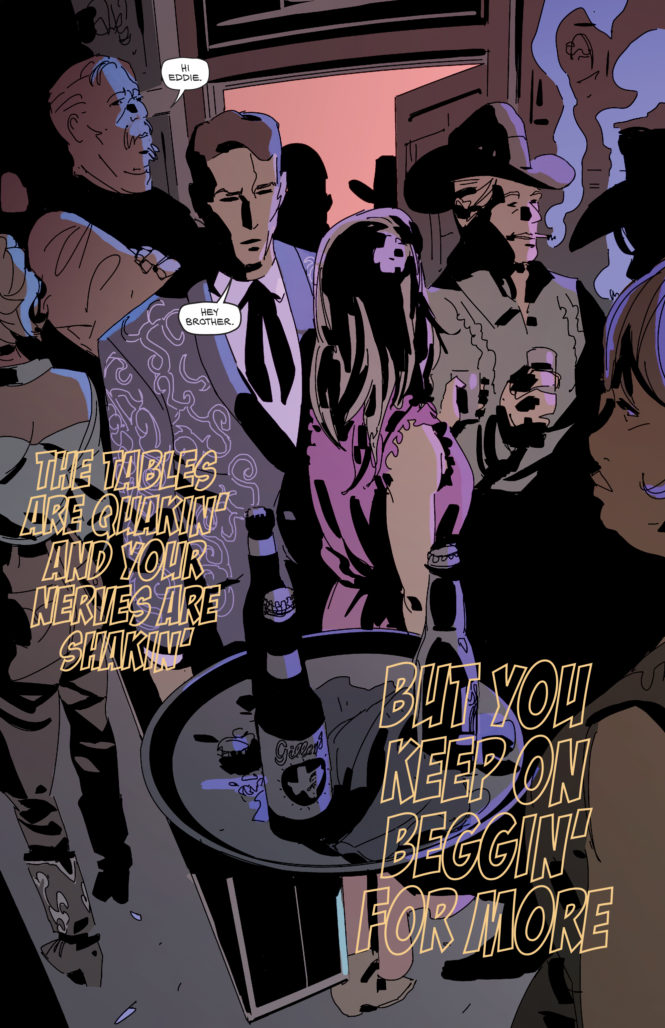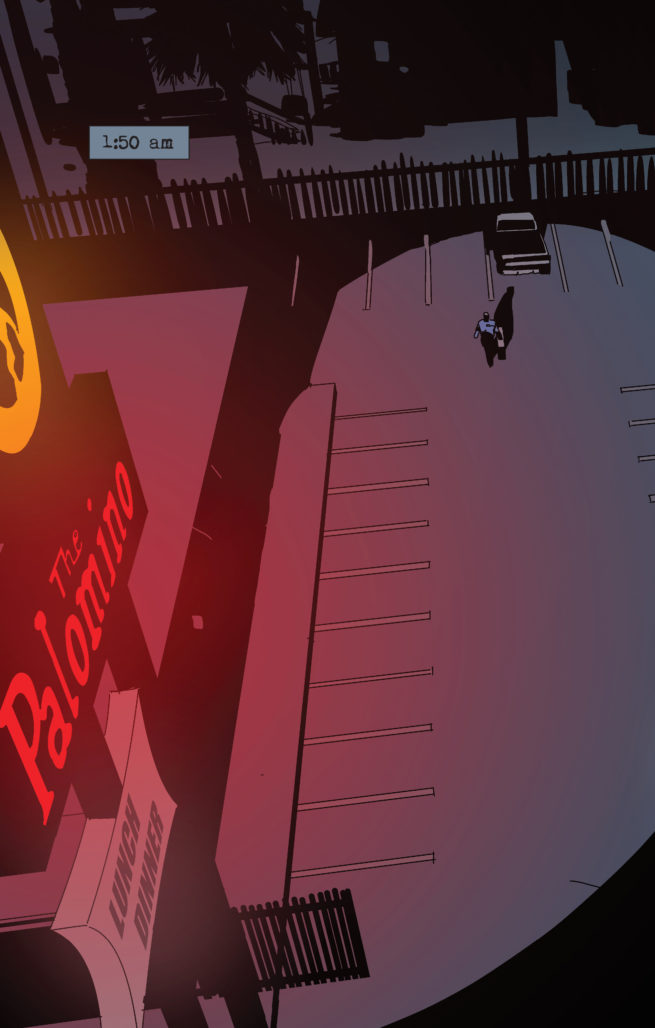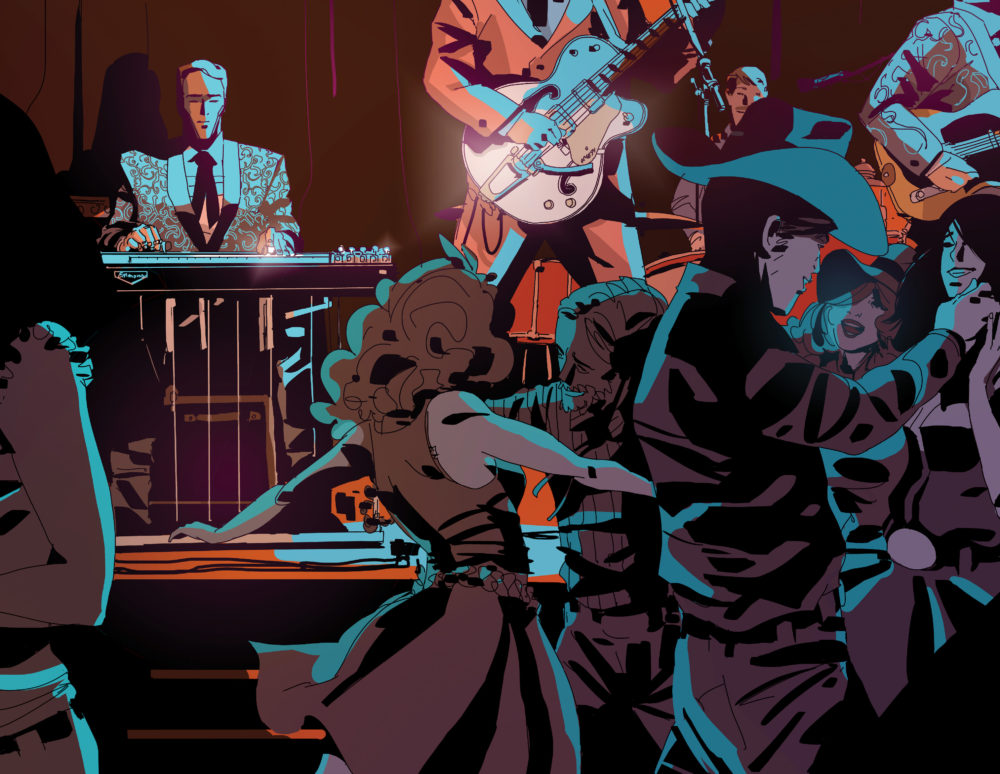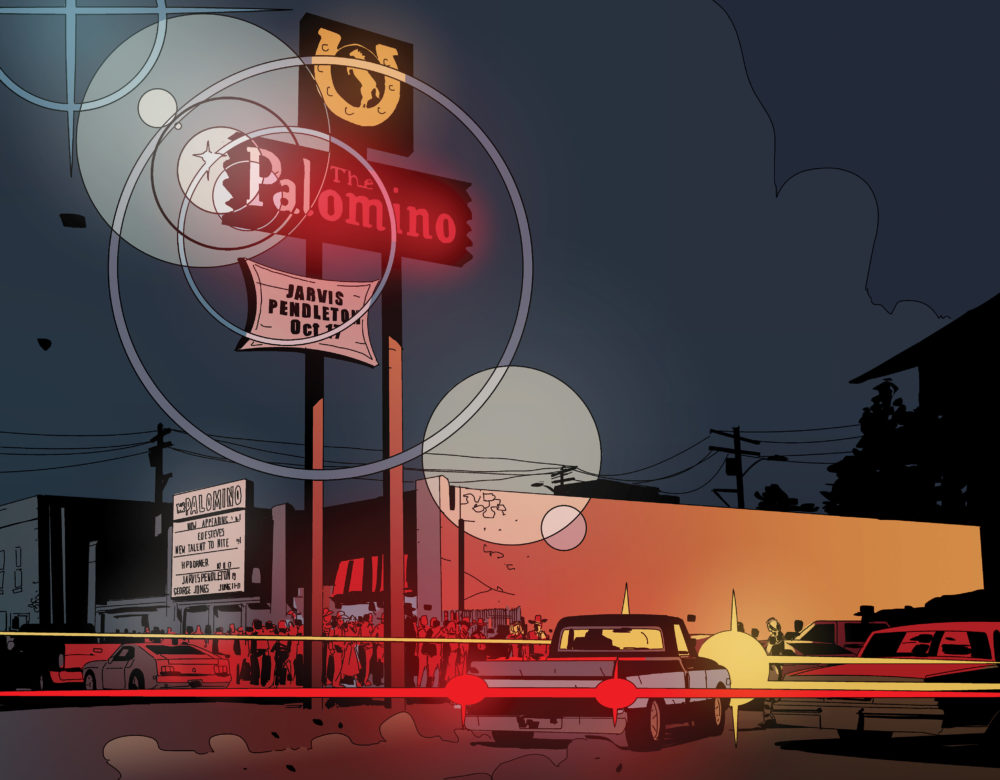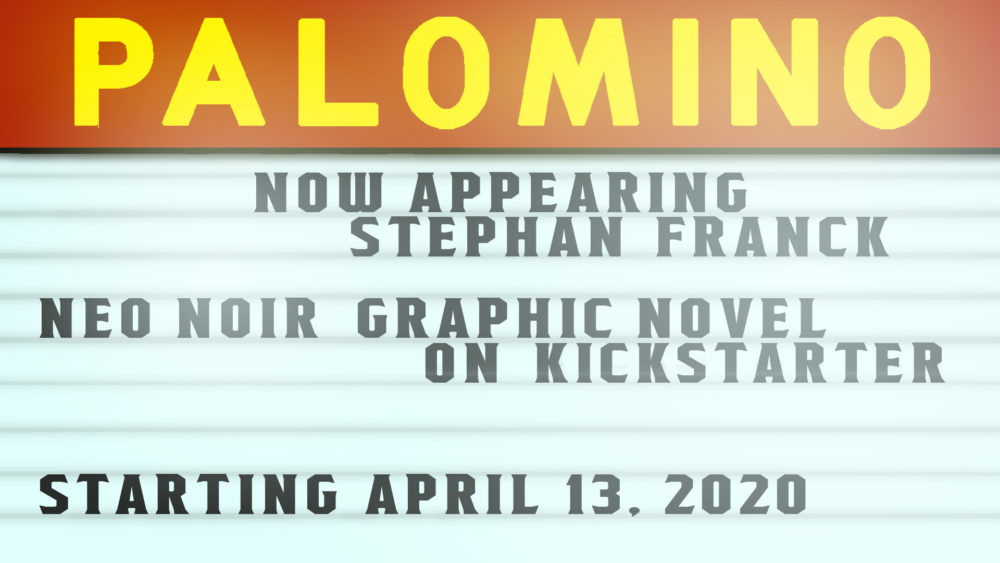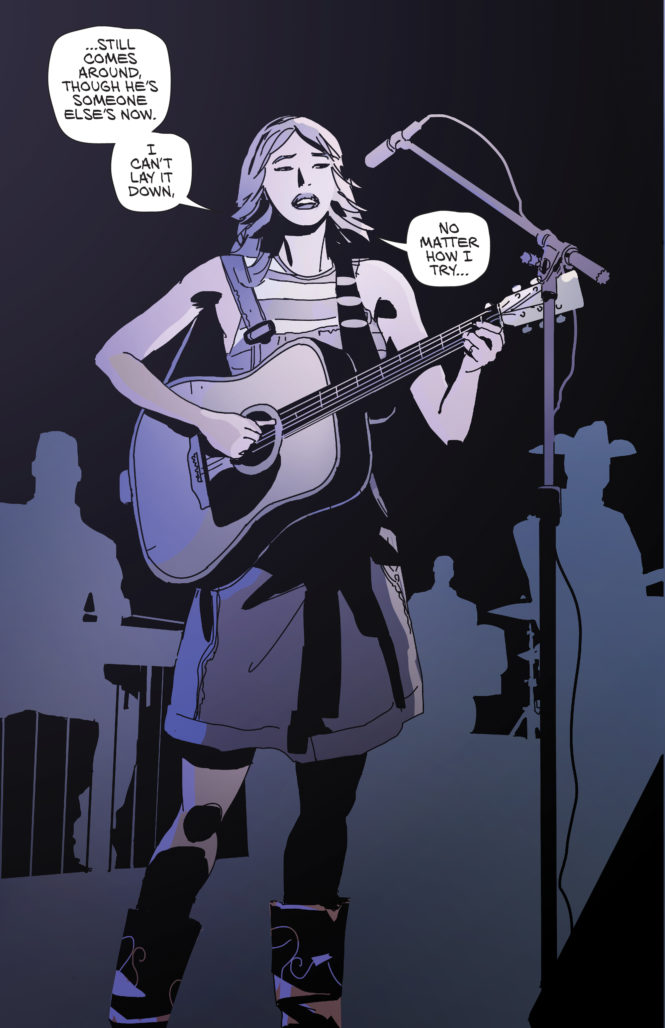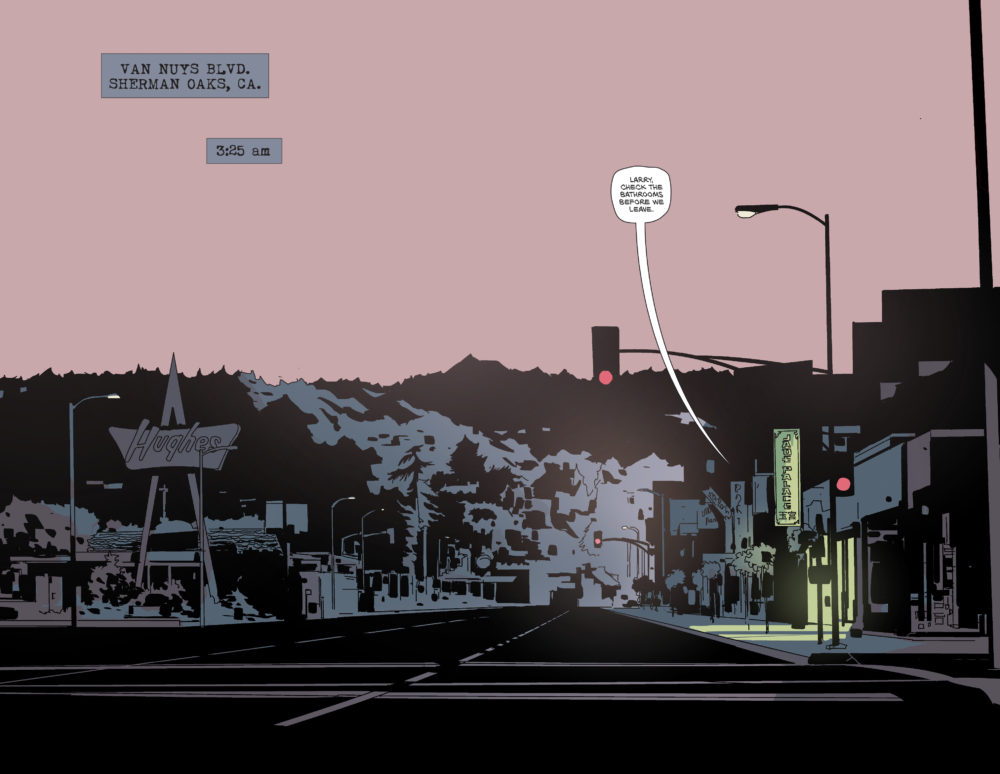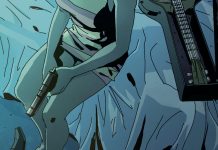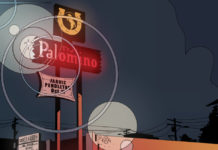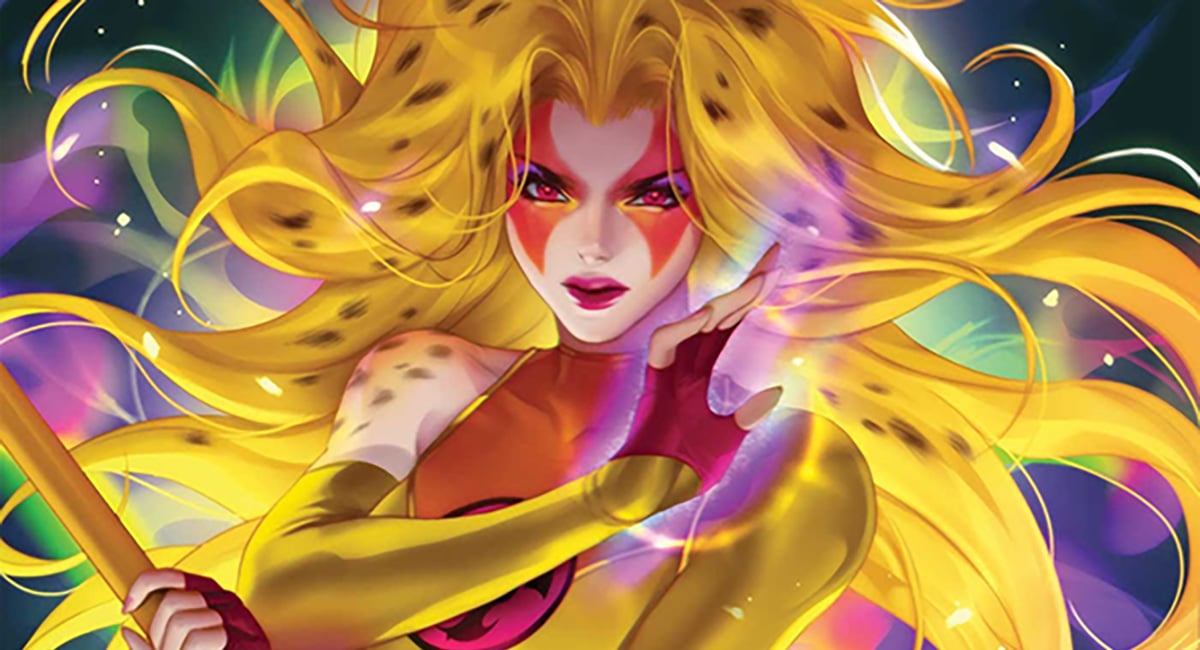Earlier this week, Stephen Franck announced a new graphic novel project on Kickstarter called Palomino.
Franck, a cartoonist as well as a veteran of the animation industry, also recently made time to discuss his new project with The Beat. With a unique premise that combines the largely-forgotten California country rock music scene of the early 1980s with a neo-noir LA crime story, this is an exciting graphic novel to watch.
Check out our interview with Franck below!
The Beat: What inspired you to focus this book on the country music club culture within Los Angeles during the 1980s, do you have a personal experience with it?
Stephen Franck: The two artistic passions of my life are storytelling–which includes writing, comics, filmmaking, and animation–and music. And since I have a particular fondness for California country rock, the two sides conveniently converged when I moved to Los Angeles in 1995. While the iconic Palomino club itself closed before I moved to the city, I did spend a fair amount of years playing guitar in what was left of the clubs here, and getting to work and become friends with many of the Palomino musicians. Over time it became clear to me that the Palomino would be a wonderful and rich setting that hasn’t been explored at all, let alone in a neo-noir LA crime story.
PALOMINO is a crime noir story full of hopeless romantics masquerading as cynics, murderers, victims. There’s dry humor and swagger for miles. And all mysteries that unfold at the Palomino are inspired by unsolved crimes from LA’s weird history.
A lot of people don’t realize that working the clubs as a musician was a regular job, back in those days, and people had entire careers just doing that. I wanted to tell that story. This is a story about the regular people toiling away in the foothills of the myth-making machine.
At the story’s center is Eddie Lang, a former Burbank police detective. To pay the bills, Eddie works as a PI by day. And, at night, he performs as the resident pedal steel guitar player at the Palomino, a club in North Hollywood. The Palomino is where Eddie finds release, and in equal measure, where troubles find him.
Eddie’s relationship with his rebellious teenage daughter, Lisette, is at the heart of PALOMINO. Although they’re united by an unbreakable bond, they’re existing under the weight of an unsolved tragedy that befell their family. They both need to find a way to reconnect and start to live again–and because those two are cut from the same cloth, they will do it the only way that comes natural: by kicking ass and taking names.
Through their relationship, I could create both a compelling father-daughter relationship and love letter to life in LA.
The Beat: What is it about our current moment that makes this era and this — as the press release notes — “lost culture” relevant to our times?
Franck: First, you have to realize the impact of that culture on its own time and the permanent monoculture. In 1981, the year in which PALOMINO is set, the cowboy is still America’s most central symbol. From movies & TV, to music, to the President himself, it all hails from Southern California and the Palomino is pickin’ and a-grinnin’ at the heart of it all. To put it in perspective, the TV actors hanging out at the Pal have shows in syndication in 200+ countries. The Eagles, who came out of that world, have, to this day, the album with the most copies ever sold.
Yet, we’re looking at a cultural scene whose economic underpinning was oddly tied to the Cold War by way of the tens of thousands of well-paying blue collar jobs in the LA area aerospace industry. A few years later, the Cold War suddenly ended and LA’s country & western clubs, which had been there since the 1930’s, went with it. This idea that an entire culture can be on the verge of collapse without even realizing it is at the forefront of people’s consciousness these days.
And the relationship between Eddie and Lisette reminds us that for every old person who feels that they’re living through the end of history, there’s a young person with their full life yet to life, determined to do something about the world they’re inheriting.
The Beat: What sort of research went into this book? While reading, I felt like the setting was recognizably Los Angeles, yet just different enough to feel evocative of another time. Did you use any visual references from the past?
Franck: One of the ambitions of PALOMINO is to capture the feel of life in Los Angeles, and the Valley in particular, so I did use a lot of references. One of the main places I wanted to get right was the Palomino, so I visited the actual location. The club itself closed in 1995, but the structure still exists as a banquet hall. The stage is still in the same place, and so is the split-level floor inside. Even the sign outside is still there., although it doesn’t say Palomino anymore. I walked around the place a bit, and took a lot of pictures from every angle, from the bar, from the stage… Then, I built a CG model of the club, both exterior and interior, and the entire street using a footprint from Google Earth, which I used for reference while drawing the book. I actually built a lot of the sets in CG, so I could scout inside them and get the best shots I could find. That contributes a lot to the feeling of a real and specific world for the story to take place in. The fact that I’m shooting those sets with an anamorphic lens with a 2.4:1 aspect ratio adds to the period and vintage cinematic feel. Even if the panel is a vertical one, it is a crop of that aspect ratio, and the feeling is still there. The fun after that is to blend the reference into the organic drawing style of the book, so that the use of CG reference never hurts the graphic qualities of the art.
The Beat: I understand this is the first of a series of books. What can you tell us about the ultimate ambition and scope of this project?
Franck: The primary ambition of PALOMINO is to entertain you with a super fun, neo-noir mystery. I want to make readers fall in love with characters that, while bigger than life, you’ll accept as “real” people. And I wanted to bring readers behind the scenes of a captivating subculture that maybe you didn’t know about.
I always thought that PALOMINO would somehow be my way into a story about the end of the American Century–a genre that I am fascinated with. But while writing the book, it became clear that the story was not about the last century, but about the one we’re in. While other books– Watchmen being my favorite example–explore the American Century’s demise, they were written during the Reagan era, and chronicled the period as the end of a story.
From our 2020 vantage point, we can now see that the early 80’s really were the start of another cycle, which in my view, eventually ended with the 2016 election. The Reagan era was the time all the seeds were planted for the world as it is today. So without spoilers, I will say that, as the series continues over 4 volumes, Lisette and Eddie will trip over some pretty big things.
The Beat: Finally, forgive the somewhat general question, but with your other work in animation, how did you carve out the time to write and draw Palomino?
Franck: First, this will sound trivial, but I will tell you that we don’t fully realize how much time and energy we waste sitting in traffic. For many years, I worked at a movie studio across town, and I was easily spending 3 hours in the car every day just going back and forth. Let me tell you there are only so many phone calls you can return and story ruminations you can have sitting behind the wheel.
In more recent years, I shifted my workflow to doing a lot more work from my home studio, and those 3 reclaimed hours make a HUGE difference. Typically I like to get down to my studio as early as I can in the morning — which are the hours where I am the most clear-headed. The noise of the day hasn’t started building, if you know what I mean. By the time it’s 9 am and I need to start my “work for hire” day, I’ve already got some good work of my own done. Then there’s evenings, but mostly, weekends are your friend (or your enemy depending on how you look at it). But very often, it’s 2:30 on a Sunday afternoon, and I see a fellow artist posting a “now playing in the studio” thing, and I know I’m not alone in this. Then Sunday evening rolls around, and you have a choice to make. You can go watch somebody else’s show, or you can finish your page. It’s just brute force, honestly. It’s not glamorous and there’s no magical way around it. But it’s that feeling that all artists have since early childhood, that if they can just get this one piece right, truth will have been unlocked and everything will be right with the world. Then you finish that piece and the feeling transfers to the next one.
